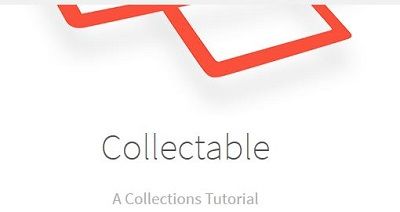Understanding Laravel 8 Collections

The Laravel framework has numerous features that ease development. This article will focus on Laravel collections. We will build a simple project to showcase the full power of this component.
Table of contents
- Prerequisites
- Objectives
- Defining Laravel collections
- Creating Laravel collections
- Eloquent ORM Collections
- Finding data
Prerequisites
To follow this article along, you need some basic knowledge of Laravel and PHP.
Objectives
This tutorial will help you understand Laravel collections and how they can be implemented in a web project.
Defining Laravel collections
Laravel collections can be regarded as modified versions of PHP arrays. They are located in the Illuminate\Support\Collection directory and provide a wrapper to work with data arrays.
We create Laravel collections using the following code snippet:
//creating a test for collection for insights
public function collect(){
//return the collection in uppercase
return collect(['john', 'doe', null])->map(function ($test_name) {
return strtoupper($test_name);
})->reject(function ($test_name) {
return empty($test_name);
});
}
Output:
["JOHN", "DOE"] # output displayed on the browser
In the code snippet above, we used the collect() method to create a Collection instance from the defined array.
We then modified each element to uppercase and remove empty elements. Laravel collections allow us to use several methods to analyze data.
Creating Laravel collections
We can create a Laravel collection using two major ways:
- Using the
collect()method:
<?php
........................
//using the collect() helper
public function test_helper_collection(){
$my_test_array=['john','doe'];
return collect($my_test_array);
}
............................................
In the code above, we declared an array and passed it to the collect() helper method which then created the Laravel collection.
- Using a
Collectionclass instance.
<?php
...........................................
//using the Collection instance
public function test_collection_instance(){
$my_test_array=['john','doe'];
return new Collection($my_test_array);
}
..............................
In the code above, we instantiated the Illuminate\Support\Collection class and included our array. The class then converted the array to a collection.
Eloquent ORM collections
ORM (Object Relational Mapping) is a database manipulation technique. Therefore, we will use the Eloquent ORM to return these data as a collection.
Let's create a simple database with dummy data and try to manipulate it using Laravel collections.
The first step is to edit our project's environmental variables, as shown below:
..............................................
DB_CONNECTION=mysql # we're using MySQL but you can modify it to meet your requirements
DB_HOST=127.0.0.1
DB_PORT=3306
DB_DATABASE=collections
DB_USERNAME=EnterYourUsername
DB_PASSWORD=EnterYourDBPassword
...............................................
Now, let's seed our User table as follows:
# create user seeder
php artisan make: seeder UserSeeder
Then edit the database/seeders/userSeeder as follows:
<?php
............................................
/**
* here, we are running the database seeds to create random users.
*
* @return void
*/
public function run()
{
................................................
//
DB::table('users')->insert([
//generate random string name with 8 characters
'name' => Str::random(8),
//generate random string email with 6 characters
'email' => Str::random(6).'@gmail.com',
//hasing the password
'password' => Hash::make('password'),
]);
}
.....................................
In the database/seeders/DatabaseSeeder file, add the following code:
<?php
..............................................
/* When you run db: seed, this is the seeder run by default
*
* @return void
*/
public function run()
{
// call UserSeeder upon seeding your database
$this->call([
UserSeeder::class,
]);
}
We can now seed the database by running the command below:
php artisan db:seed
# expected seeding output
Seeding: Database\Seeders\UserSeeder
Seeded: Database\Seeders\UserSeeder (72.82ms)
Database seeding completed successfully.
# if you don't get this output, check if you have added the UserSeeder in the DatabaseSeeder call method
Since we've set up our logic, let's now query our database to return all users.
//get users from db
public function get_db_users(){
dd(User::all());
}
Output:

In the image above, the lluminate\Database\Eloquent\Collection {#1210 ▶} class returns a collection. We can therefore use different methods to analyze the data.
Finding data
In this section, we will learn how to find data in a collection.
Some of the techniques that we can use are discussed below:
- The
where()method. In this method, we filter a collection using thekey/valuepair.
Let's create a collection with data and filter it using the where() method.
.................................................
///filter a collection using the where() method
public function apply_where_on_collections(){
$collection = collect([
['Tutorial' => 'Laravel Collection', 'price' => 250],
['Tutorial' => 'Introduction to Laravel 8', 'price' => 140],
['Tutorial' => 'Laravel Cron Jobs', 'price' => 300],
['Tutorial' => 'Laravel Tests', 'price' => 400],
]);
//filter to get a tutorial which costs $250.
$filtered = $collection->where('price', 250);
//return the result
return $filtered->all();
}
........................................
Result:
[{"Tutorial":"Laravel Collection","price":250}]
- The
contains()method. We use thecontains()method to check whether a given item is available in a collection or not.
Let's look at the example below:
<?php
..............................
//filter method to check item exisitence
public function apply_contains_on_collections(){
$collection = collect([
['Tutorial' => 'Laravel Collection', 'price' => 250],
['Tutorial' => 'Introduction to Laravel 8', 'price' => 140],
['Tutorial' => 'Laravel Cron Jobs', 'price' => 300],
['Tutorial' => 'Laravel Tests', 'price' => 400],
]);
//returns true/false
dd($collection->contains('Tutorial','Laravel Collection'));
}
...............................................
Output:
True
In the example above, we checked whether an item exists in the collection and returned a boolean value depending on its availability.
Conclusion
In this tutorial, we have learned how to use Laravel collections. We have also learned how to set up a database and retrieved data using a collection.
You can now use this knowledge to craft quality Laravel applications.
Happy coding!
Further reading
Peer Review Contributions by: Wanja Mike

